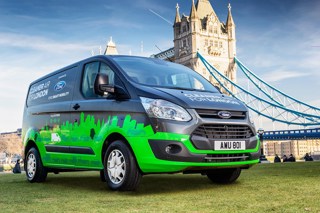A team of Ford employees have developed Autolivery, a concept to solve the last mile challenge when using autonomous delivery vehicles.
Drones are deployed from self-driving vans to pick up and drop off goods and packages in urban areas.
It will enable deliveries to made at destinations which are inaccessible by car such as, high up in a tower block – or where parking would be difficult, impractical, or unsafe.
New data reveals that motorists in Europe’s cities spent up to 91 hours sitting in congested traffic during 2016, the Autolivery service illustrates how new technologies could improve the lives of consumers with smart connected homes, and help to pave the way to a more sustainable future.
“Ford has at its heart a culture of disruption and innovation designed to come up with solutions that put people first to save them time, money and aggravation, and also to make our cities easier to navigate and better to live in,” said Ken Washington, vice president, Research and Advanced Engineering, Ford Motor Company.
The Autolivery idea, one of many submitted by Ford employees to tackle the last mile challenge, paid particular attention to the challenge of the last 15 metres in goods delivery. Widely considered the most challenging part of the goods delivery process to automate, many companies are working on how to solve the complexity of delivering packages the last 15 metres, or from kerb to door. The pressure to solve this challenge is expected to increase globally in coming years with GDP growth, and a rise in local deliveries due to online sales.
Ford intends to have a fully autonomous, SAE level 4-capable vehicle for commercial application in mobility services, such as ride sharing, ride hailing or package delivery fleets, in 2021. It also expects continued growth in electrified vehicle offerings, to the point where they outnumber their petrol‑powered counterparts, in the next 15 years. Shared modes of transportation will continue to gain popularity, and connected communications between vehicles and infrastructure will grow.
“We are challenging ourselves to understand how people live, work and move in urban areas, to inform our research in mobility technologies and solutions,” Washington said.



















Login to comment
Comments
No comments have been made yet.